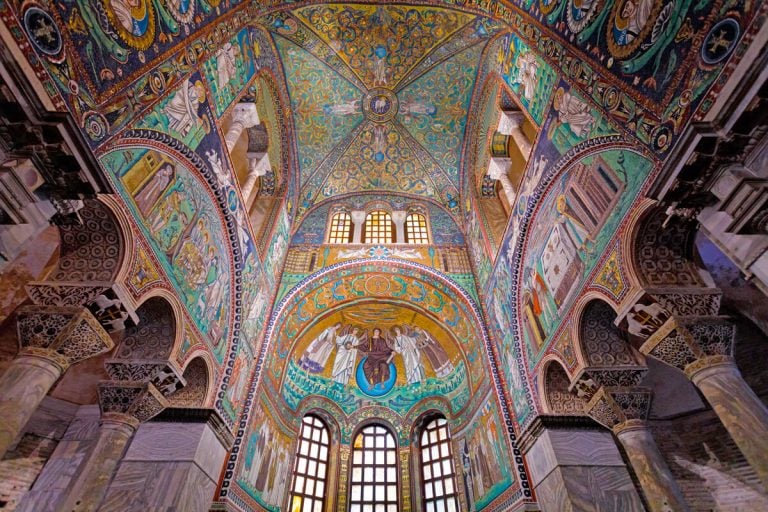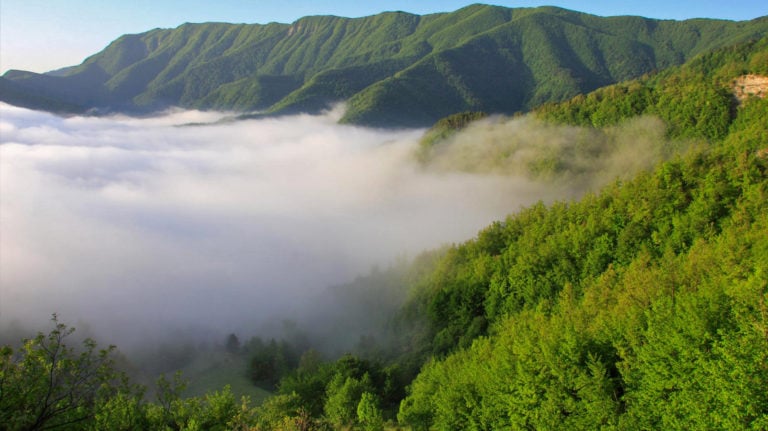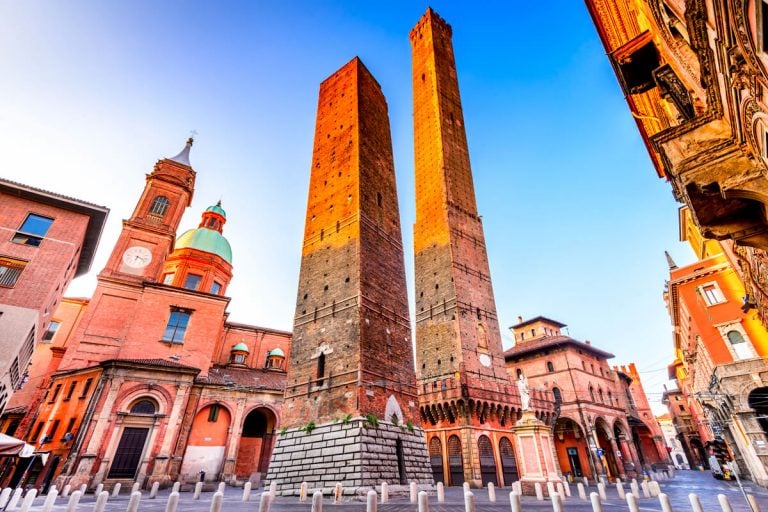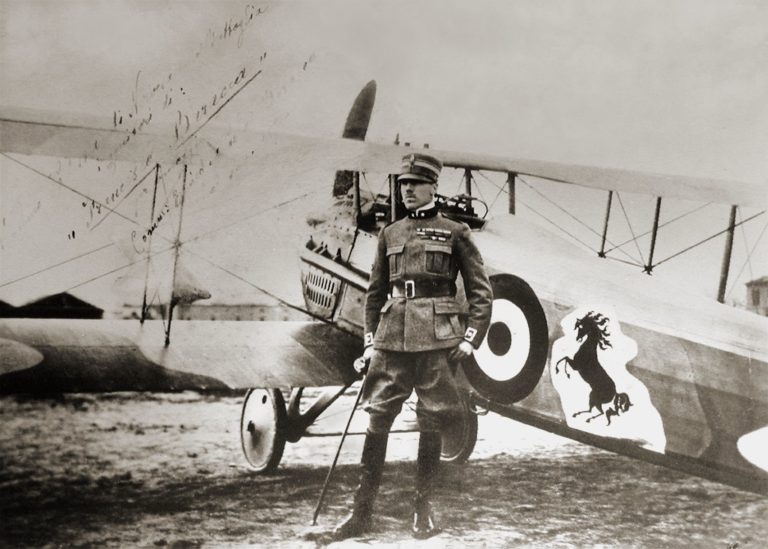Overlooking the fertile Po Delta Valley, which embraces Ravenna, the landscape might seem without any continuity: endless expanses of fields open up in front of your eyes, alternated by small inhabited centres that dot an immense yellow-pastel-coloured sea.
Everything changes when you look more closely though. The country gains shape and shows its real aspect: there are parish churches, fortresses, villas, old mills and country houses that break the horizon like a stone breaks a mirror of water.
It’s the Middle-earth the Bassa Romagna, the place where we are; it’s a land suspended in time, without any geographical or temporal borders that finds its identity in the traditions and its fervid cultural activity.
Surrounded by some of the most beautiful cities in Emilia-Romagna such as Ravenna, Faenza, and Ferrara, this territory is cut by streets and paths that are perfect for a bike ride.
There are so many ancient villages, craftsmen workshop, belltowers standing in the middle of fields and, above all, mysterious witnesses of the march of time.
Life revolves around the local associations, the bars and piazzas: here, people meet, talk about politics, play cards and drink together with a good glass of Sangiovese wine.
Under the porticoes and in the several piazzas children run after each other and play, while the local markets display the most natural and healthy products, the result of an intense, virtuous and modern farm work.
The country traditions survive without breaks, following the natural cycle of seasons and finding important social strongholds in the neighborhood relations. The dialect and the number of traditional festivals and food and drink feasts, turn the piazzas or even a simple gazebo in extraordinary theatres of life and joy.
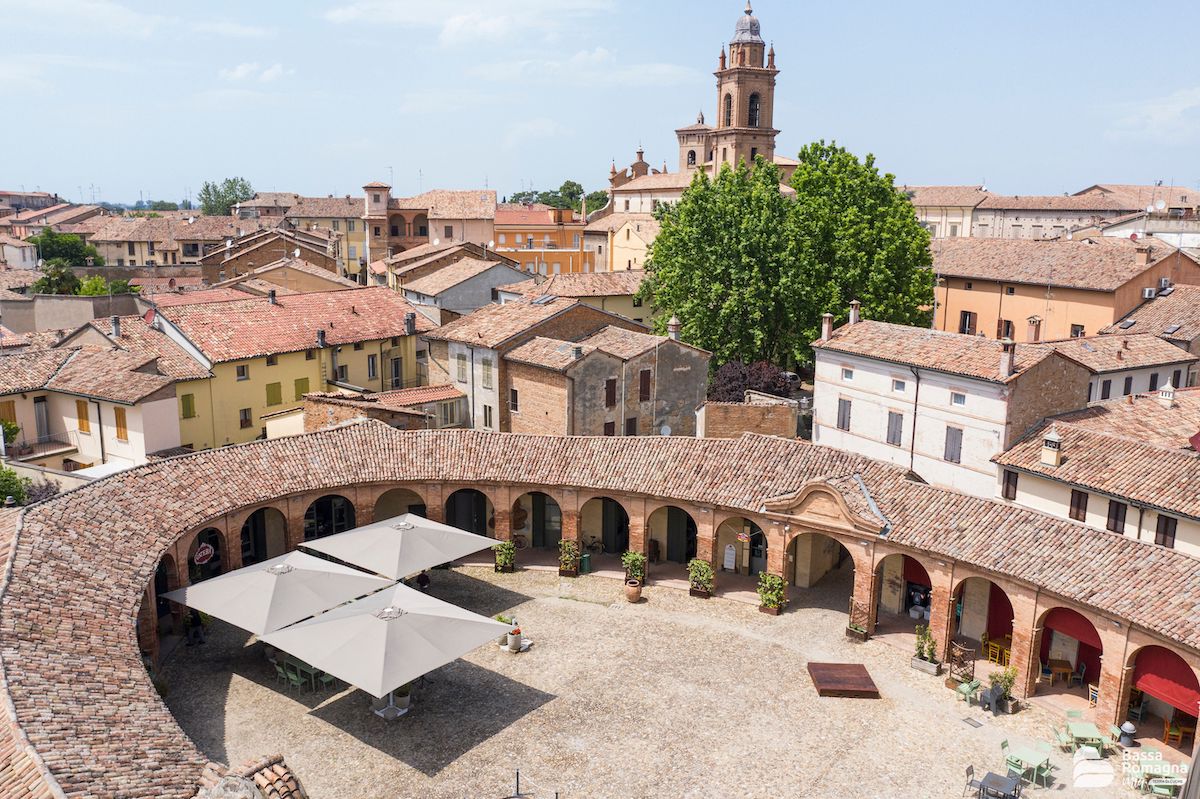
Bagnacavallo, Lugo, Massa Lombarda, Fusignano, Conselice, Alfonsine, Russi, Cotignola, Bagnara di Romagna e Sant’Agata sul Santerno are all towns marked by the succession of the great lordships of the 14th and 15th centuries (Visconti, Sforza and Este). Remaining unchanged until World War II, they recorded important acts of resistance and struggle against Nazi-Fascism.
Good Food & Wine is the official language when you sit at a table here. The products are prepared thanks to the hard work of the country “artists” – farmers and artisans who are the emblems of the tight relationship between man and nature.
In these lands, eating is like a communion practice, and it is celebrated each day in front of an exquisite plate of “tagliatelle al ragù”, and on Sunday, oftentimes, a delicious bowl of homemade cappelletti (which is a hat-shaped type of pasta with a filling made of four different varieties of cheese)
A meal always starts with the first courses, the so-called “minestre”, which are always strictly flattened with the rolling pin. After this, the second courses arrive: they are usually meat-based dishes paired with a good glass of red-wine and accompanied with piadina.
The ritual always ends with the commensals standing up from their chairs in laughter and clamours – maybe because of a joke in dialect.
What to see
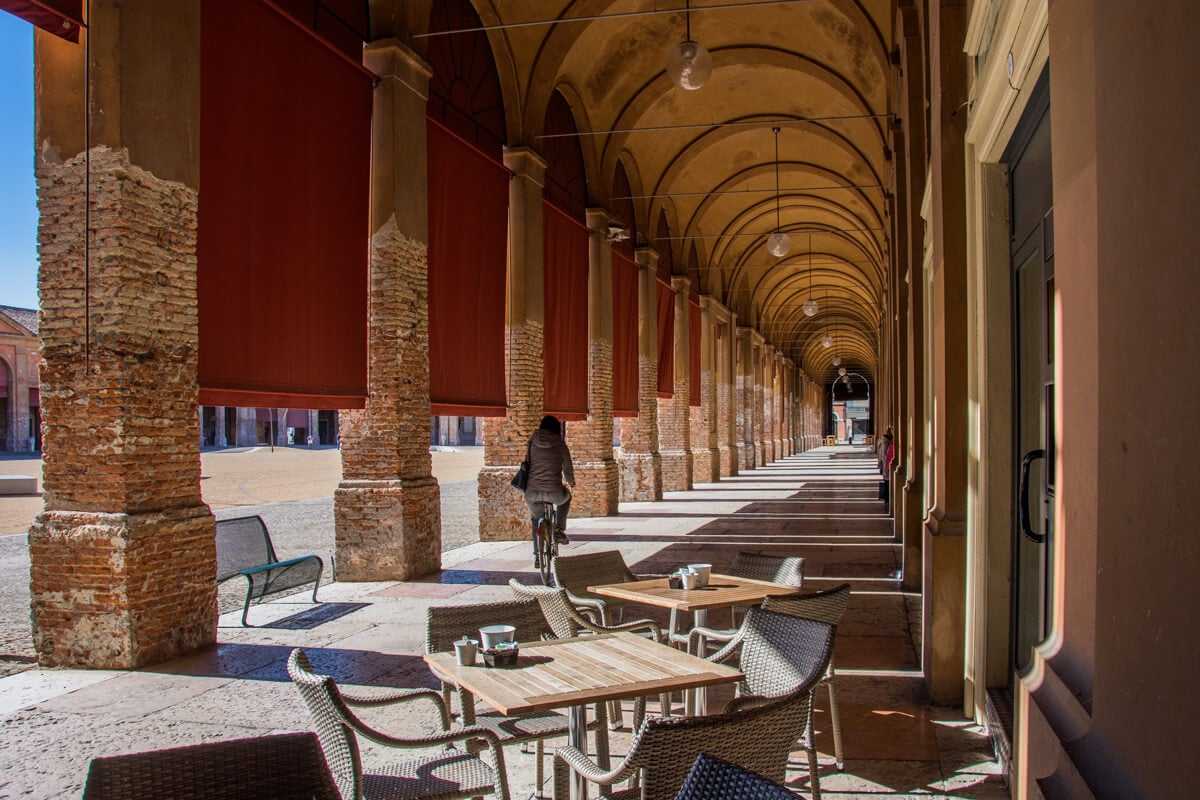
There are so many places to see if you look around the lands of Bassa Romagna: historic centres, important archaeological sites, museums and nature areas of interest.
You can start from Bagnacavallo with its peculiar Piazza Nuova, an oval-shaped architecture encircled by an elegant portico that was once the site of stands and markets whereas today it’s the ideal place for a perfect Italian aperitif.
Another place worth a visit is the Church and the Convent of San Francesco, an accommodation facility that welcomes tourists and visitors as well as an exhibition space for artistic performances.
You can even drop by the nearby Parish Church of San Pietro in Sylvis, one of the most ancient churches (7th-century a.D.) of the Byzantine Exarchate or see the majestic Rocca Sforzesca of Bagnara di Romagna dating back to the 15th century, which is today site of the museum of local history.
If you stop in Lugo, you absolutely need to see the museum dedicated to the war hero Francesco Baracca and look at the windows of the boutiques in the Paviglione, a sort of shopping mall opened more than 2 centuries ago.
Not far away, Russi safeguards an old Roman Villa, maybe one of the best-preserved archaeological findings of northern Italy and the imposing Palazzo San Giacomo, a noble villa of the Rasponi family.
Finally, you cannot miss the Street Art in Cotignola, which boasts a number of artworks linked to the local memory, and the several little museums that preserve important tiles of the collective story of this land.
How to Arrive
Bassa Romagna is a 480sqm piece of land between the Adriatic Coast and the Apennines, easy to reach through the main means of transport.
BY CAR
Near the rich network of local streets are the big arteries that link Bassa Romagna with the rest of Italy. The first main road is the highway Autostrada A14 (the so-called Strada Adriatica) that links the North of Italy with the South of Apulia.
Then, departing from Ravenna, there is the state road Strada Provinciale SP 253 San Vitale that allows you to reach Bologna crossing the inland. The last main street road is the so-called “Reale” (S16) that connects Ferrara with the ancient Byzantine capital. Info on: www.viabilita.autostrade.it
IN TRAIN
Bologna-Ferrara, Rimini-Ravenna, Ferrara-Venezia, as well as the lines crossing Forlì and Faenza: these are the railroad lines that cross Bassa Romagna. Info on: www.trenitalia.com
Author

Davide Marino
Davide Marino was born archaeologist but ended up doing other things. Rational – but not methodic, slow – but passionate. A young enthusiast with grey hair
You may also like
Discover Ravenna (Emilia-Romagna, Italy): Best Things to Do in the city
by Davide Marino /// November 16, 2017
Breathtaking landscapes in Romagna… and where to find them
by Davide Marino /// August 6, 2018
10 good reasons to come in Emilia Romagna
by Davide Marino /// February 22, 2018

Interested in our newsletter?
Every first of the month, an email (in Italian) with selected contents and upcoming events.
From China to Romagna: do you know the game of Mahjong?
by Davide Marino /// June 7, 2019
